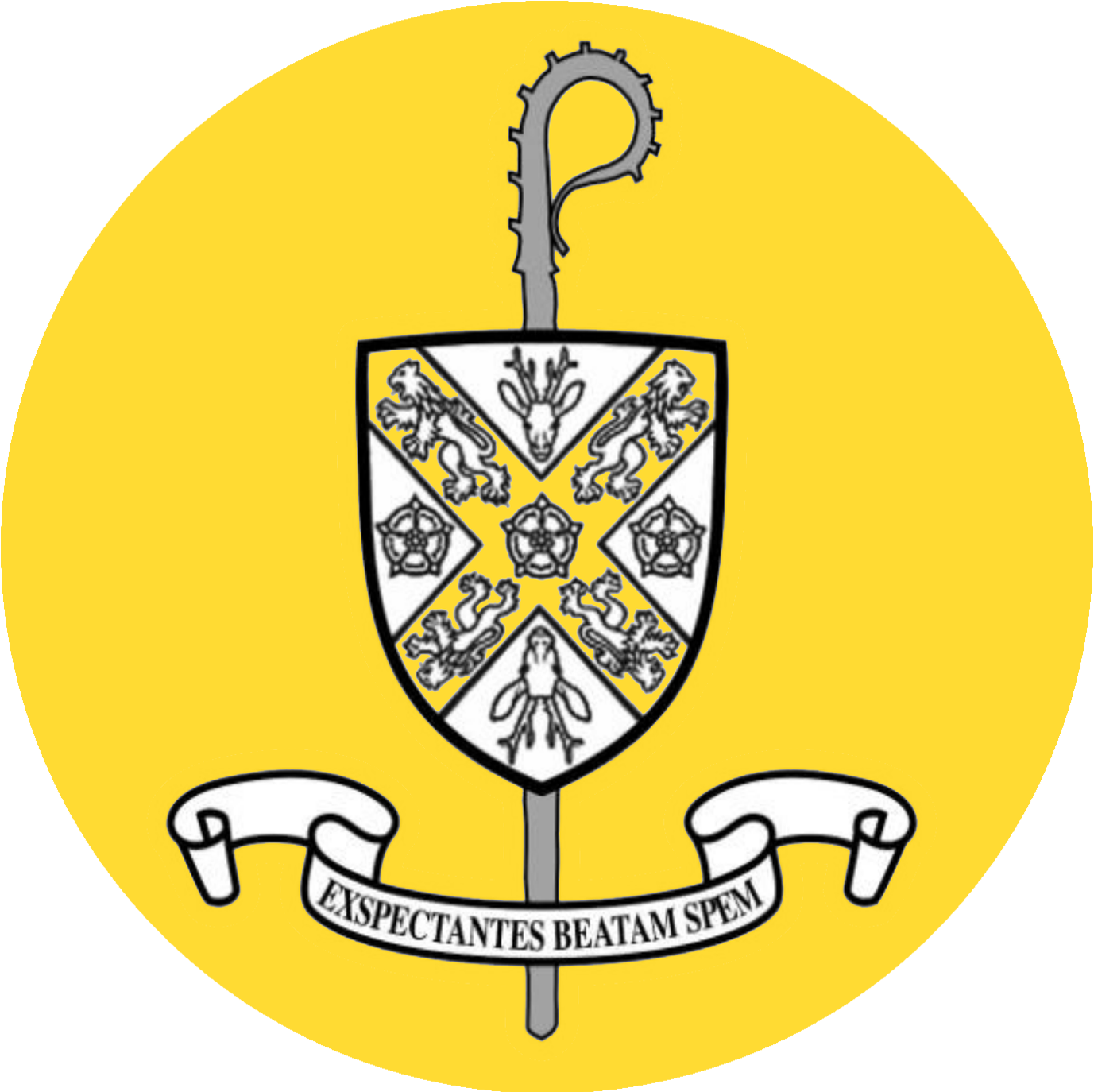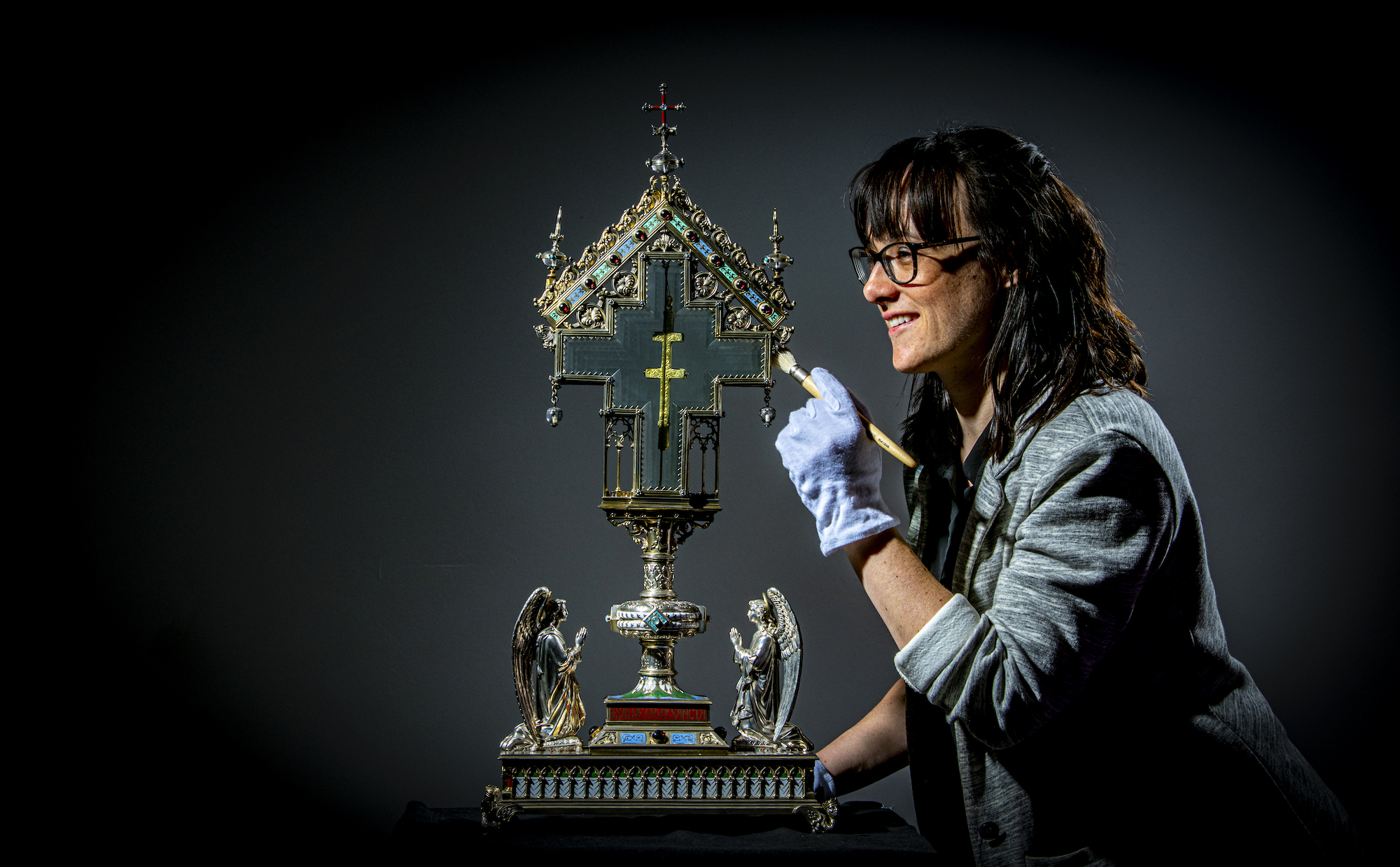The Bar Convent, York, is displaying its little-known True Cross relic along with new research and recently rediscovered documentation to mark Easter.
This documentation, along with new research, shows a likely explanation as to how the relic eventually arrived at the convent in 1792 and has enabled the convent to trace elements of the history of the relic which have been a mystery since the 19th century.
The relic is encased in an ornate and beautiful reliquary case of silver gilt, precious stones and crystal from aru1867-70. It was specially designed by the eminent York architect, George Goldie.
Dr Hannah Thomas is the first layperson to look after the collections and to encourage research, along with archiving, documenting and digitising them so that they can be shared more widely with the public.
Dr Thomas said: “Established in 1686, the Bar Convent is the oldest living convent in England.
“On account of its position in post-Reformation England as one of the only religious establishments in the country, and a chief centre of Catholicism in the north of England, it was regarded as a suitable repository for sacred items to be protected.
“This has resulted in a collection of fascinating historic Catholic objects.
“The collections have been incredible to work with. I have been very fortunate to discover some astonishing objects, the stories of how they have survived and of the people that have gone to great lengths to preserve them.
“A particularly interesting find are the documents relating to the True Cross relic. The relic itself does not appear to be widely known beyond this religious community. It is clearly a significant piece that would certainly be of great interest to a wider audience.
“When researching the relic, however, there seemed to be lengths of time in its history that appeared to be lost, and previous research carried out in the 1860s was unable to ascertain how the relic had transferred from one family to another.
“Through this documentation, and thanks to modern technology, we have been able to piece together a likely, very complex, history of this True Cross relic.
“We are thrilled to be able to enrich our knowledge of this piece, which has been so well protected and admired for centuries. It is a centrepiece of our collections and remains an object of contemplation with both religious and historic significance.
“We considered Easter, and the anniversary of when it was first authorised for veneration, to be the most appropriate time to share this research and to highlight this special object.”
The reliquary is on public display in the Bar Convent exhibition, which also includes a rare 15th-century processional cross, a painting of Thomas More from the school of Holbein, vestments worn at the first “illegal” mass in the chapel and more.This research is part of a wider, ongoing research project into the Bar Convent’s collections.
The exhibition begins on April 2. Admission is £5 for adults and £2 for children, or £10 for a family and with concessions available. Please note: The Bar Convent is closed from April 15-18.
The Journey of the Bar Convent True Cross
The inscription on the case of the cross translates as:
“The relic of this Holy Cross of our Lord Jesus Christ enclosed in this case of silver gilt in the form of a Jerusalem cross; by Arnulphus, Patriarch of Jerusalem; was given by him to D. Shirley, armour-bearer, as a reward for his distinguished valour in the taking of the City of Anno Domini 1099; which Relic [was given] to his family as the greatest of treasures.”
This inscription was added between 1659-1662 when it was taken to St Omer in France for repair and authentication. However, the scroll work is much older and is of a genuine Byzantine design as seen in the 9th, 10th and 11th centuries, and introduced to the west after the First and Second Crusades.
Arnulphus was made patriarch after travelling to Jerusalem with the Bishop of Bayeux on August 1 1099. He was also a tutor to William the Conqueror’s daughter. D Shirley was a knight and was a member of a well-known, prominent English family.
In the 1860s, the convent wished to display the small relic for public veneration, but could not do so without any paperwork to verify its authenticity. After some research conducted by Reverend D H Haigh (d1879) of Erdington, a well-known antiquarian, on behalf of the sisters, it was established that it was brought to the convent by the Jesuit priest Thomas Lawson SJ (1720–1807) in 1792, who had been given it by his great-uncle, also called Father Thomas Lawson SJ (1666–1750), in 1750 at the English Jesuit house in St Omers.
The new research enables us to now trace how the relic is likely to have changed hands from the Shirley family to the Lawson family, something which has been a mystery. Simplified, the will of Sir Ralph Shirley, written in 1517, leaves his belongings to Sir Richard Sackville (1507-1566) his cousin and executor. Several generations later, John Lawson marries into the family.
Signed and Sealed
Reverend D H Haigh obtained certificates of authenticity from church authorities in France, and in 1867 Bishop Cornthwaite authenticated the relic, and signed a deed authorising its public veneration. It had previously been authenticated and sealed by the Bishop of St Omers in 1708.
The reliquary made its way to York via Father Thomas Lawson SJ, and an additional document was signed by Reverend Mother Catherine Rouby to officially acknowledge the arrival of the relic at the Bar Convent in January 1792, and to agree that the convent would look after the relic on behalf of the diocese to be “carefully kept and preserved”.
The documents from the Bishop of St Omer were sent to the convent along with the relic, thus satisfying Dr Cornthwaite, Bishop of Beverley, then Leeds, as to its authenticity.
On April 11, 1867, he signed and sealed a deed authorising its public veneration, on the condition that a suitable reliquary be designed to house it for display – this is the large elaborate silver and crystal case in which it is displayed today.
The Reliquary
Accordingly, an order was sent to the firm of Armand Calliart of Lyons for the execution of a monstrance-like case after a design drawn and presented to the Community by the eminent architect, George Goldie, whose sister Mary had joined the convent in 1851.
The work when completed was exhibited at the Papal Exhibition, Rome, in 1870, where it was said to “maintain its claim to richness, beauty and elegance, amid a constellation of marvels of art”
It is of medieval design, the material is silver gilt, richly enamelled and adorned with precious stones. The centre is a crystal case in the form of a cross, within which, at the top, is a hook from which the original Patriarchal reliquary is suspended.
This relic is enclosed in a pectoral cross of the patriarchal form, having two cross bars or transoms. It measures five and a quarter inches long and about three-quarters of an inch broad and thick: the transoms are one and a half and one eighth respectively. The cross is made of thin silver plate gilt, chased with scrollwork on the front and back.

